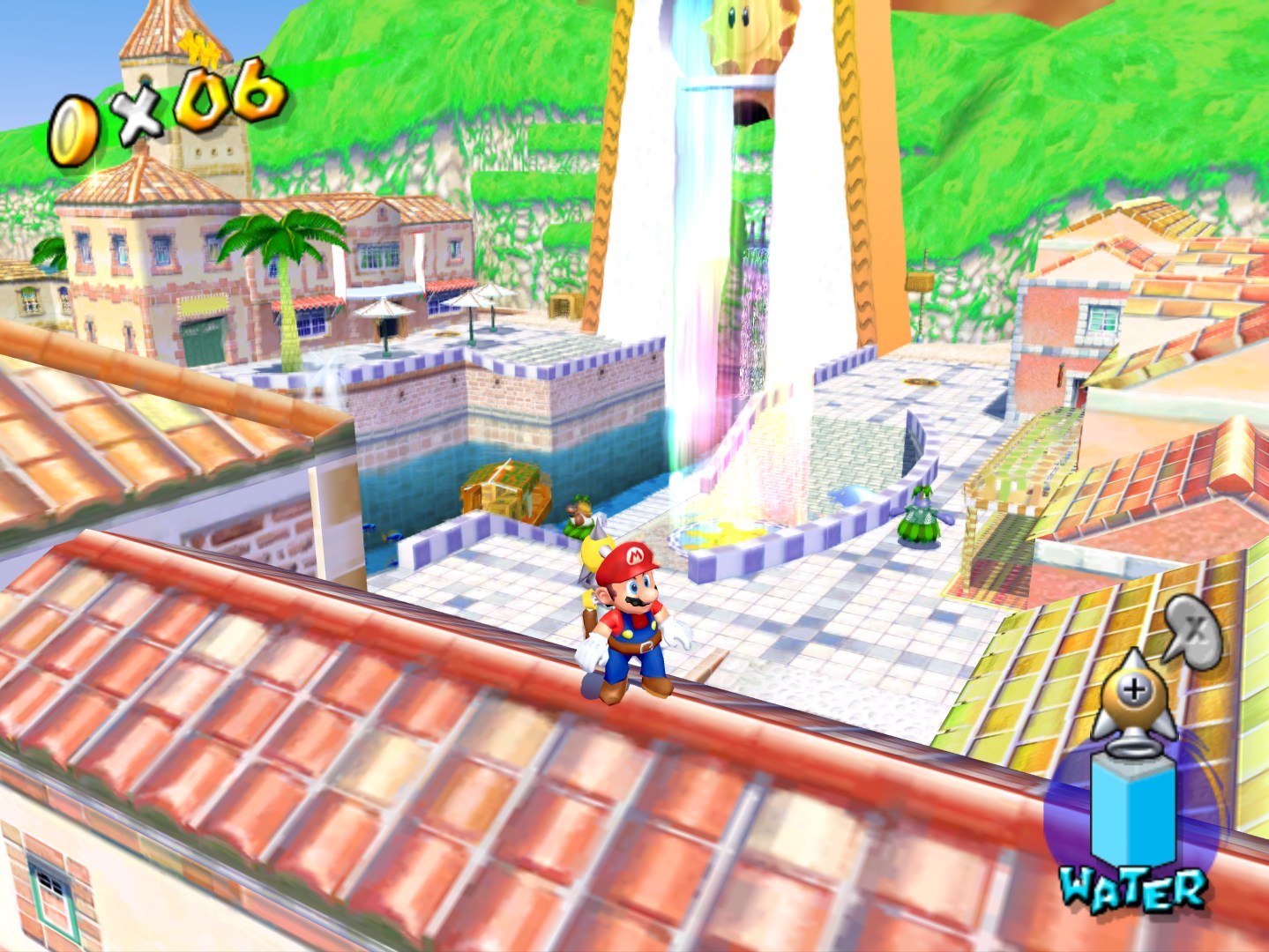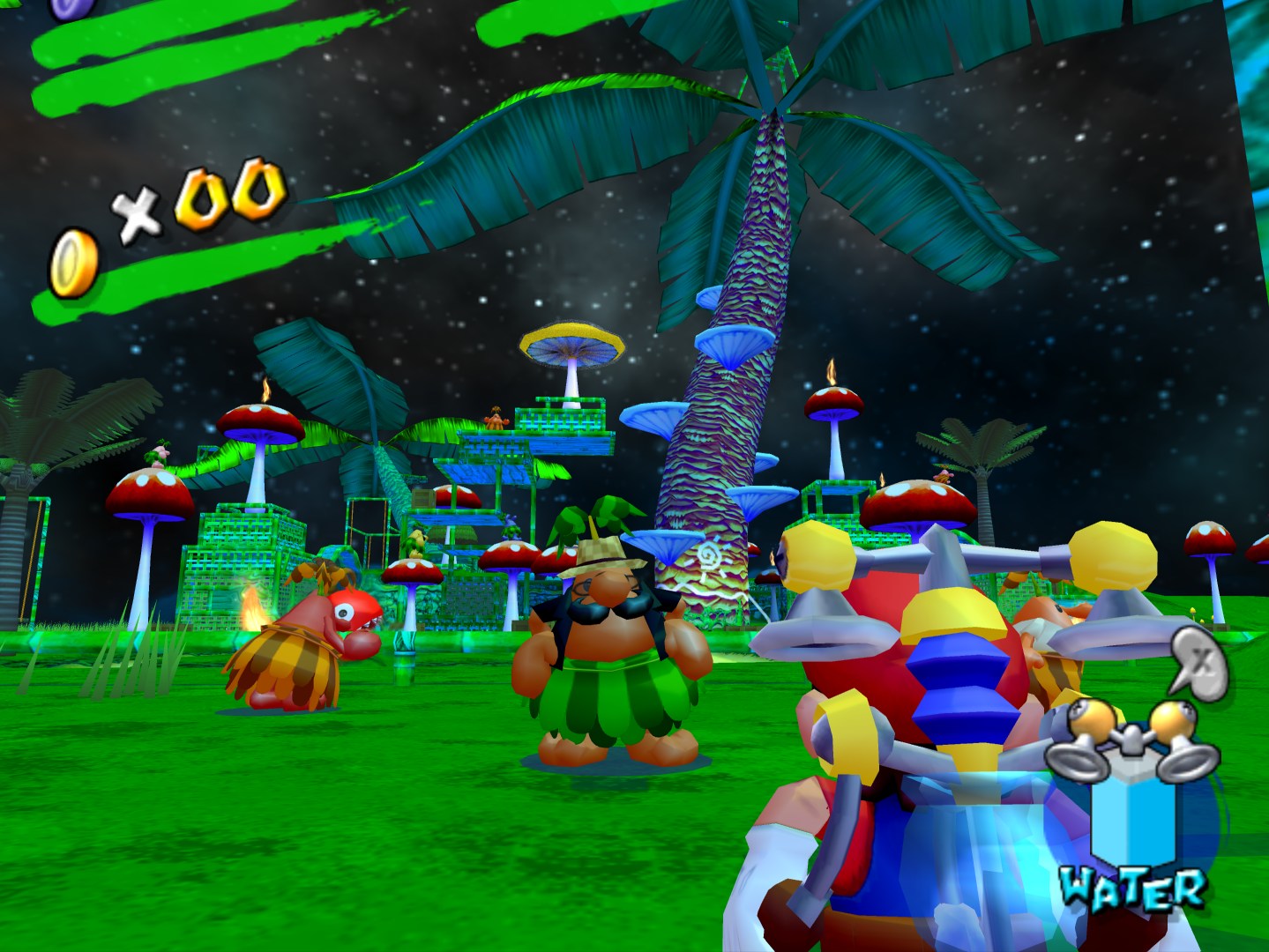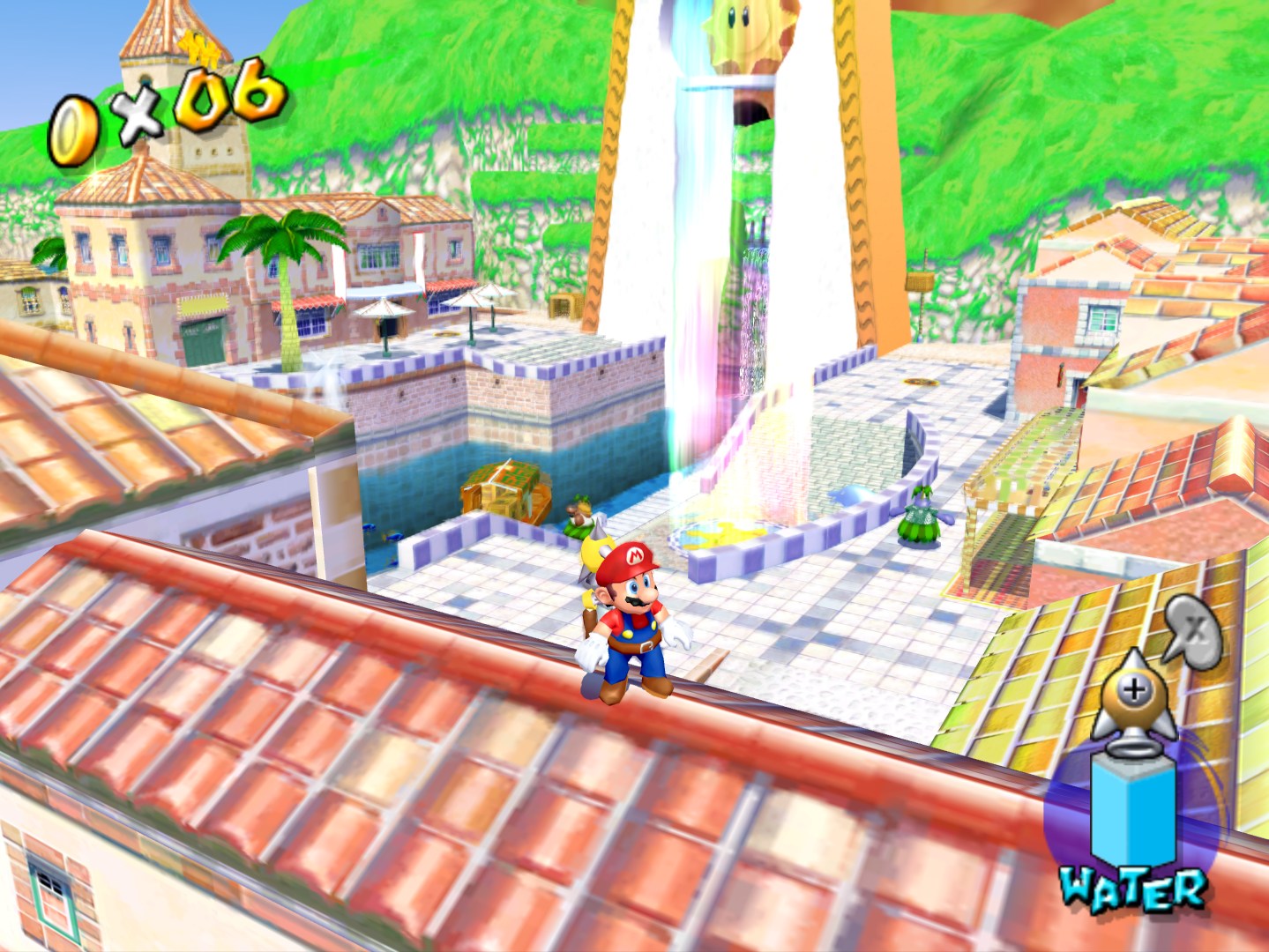Retro Review: Super Mario Sunshine
Written by Ben Vollmer
By almost every measure, Super Mario Sunshine is the single biggest step outside the box for Nintendo’s lucrative plumber franchise. For the first time in the series, there’s voice acting (and it’s every bit as weird as you’d think) and Mario is given a peripheral item that works as both a weapon and tool for movement. Atmospherically, it’s a huge transformation from the blocky mushroom kingdom to the smooth, serene beaches of Isle Delfino. Everything about the game feels whacky and out of place, but just like its predecessor in Luigi’s Mansion, that’s the reason it works.
Despite it being such a unique treasure in the Mario library, Super Mario Sunshine is very similar to Super Mario 64 in terms of platforming and exploration. Sunshine manages to keep things fresh with a water-pump tool called “FLUDD”. The tool has a couple of different gears, one that feels more like a weapon and sprays water from a nozel, and another that works as a hovercraft, shooting streams of water into the ground and supporting Mario’s weight. It’s the latter use that is particularly intriguing, as it allows Mario to travel nearly twice the distance on jump (and a bit higher, too).

The maps, which are assorted in a similar – yet less diverse – manner of 64, are perfectly designed for improvisation. There’s normally a set path to the open levels (marked by arrow signs), but sometimes the best way to a Shine, which is the game’s version of a “Star” is by crafting your own route. There were instances where backflipping over windmills and hover-crafting my way over to a platform was easier than dealing with a few enemies that stood in my way. For every location in the game, there are a handful of ways of getting to it. In that sense, it feels like the most non-linear Mario game to date.
It’s worth noting that this fantastic platforming is often mired by terrible camera design. For the first time, Sunshine gives the user full control over the camera angles. In an odd twist, this freedom of control leads to some really bizarre angles. Much of the time, you’ll find yourself staring at the shadow of Mario through a wall or be so close to him that you can’t see anything else. The camera will find a life of its own and shift in a circular motion when it doesn’t like the angle you have set for it. This only becomes frustrating when you’re at the end of a long Shine hunt only to fall off the side of a platform because the camera violently shifts on you. In a game that’s already pretty tough, the camera has a tendency to be your worst opponent.

Fortunately, the levels are so open and elegant that the run-ins with the camera are less than in Super Mario 64. Outside of the sheer improvisation that goes behind completing a level, there’s so much variety within the space that the game gives you. There are levels with beaches, hilltops and things like a hotel or rollercoasters all rolled into one of seven distinct areas. Many of the levels even have different times of day or various levels of cloudiness. It really is a technical marvel, and the game holds up exceptionally well. Similar to The Legend of Zelda: Windwaker (also on the Gamecube), the color pallet knows no limits, ranging from a light blue to a dark orange. The game is gorgeous, through and through.
Some of the stand-out changes to the game include the odd design choice to include voice acting. There’s more narrative in Sunshine than nearly every Mario game to date. It feels campy, but it certainly helps the game stand out. The writing is generally pretty funny, even when it’s doing its best to create an actual plot. The long story short is that Bowser Jr. has disguised himself as “Shadow Mario” and vandalizing Isle Delfino. This confusion leads to the residents of Delfino pointing fingers at our mustache-sporting protagonist. It doesn’t take but ten minutes into the game for these same residents to seemingly forget about the whole thing, but it’s a fun starting point and it at least feels different.
The game’s largest issue is when it breaks from its variety. Every new “world” has a final star in which you’re required to chase down Shadow Mario and have him cough up a Shine. It seems easy enough, but Shadow Mario transverses the levels with expertise while you’re left with awful camera angles and chasing him in circles. These Shines can often last more than 15 minutes, and they stop being fun after the first two.
Fortunately, the game does an excellent job with its other bosses. There are normally one, sometimes two, per level. Each featuring a different set of challenges. Ranging from a squid who requires an uncorking to a string ray that divides itself into hundreds of pieces, the boss fights are varied and provide some of the best bits of gameplay. The game wraps up with one of the best and most ferocious Bowser fights in Mario’s history, giving the game an excellent cap.

Super Mario Sunshine holds up incredibly well. Not only does it control fantastically (make sure to use a Gamecube controller, as the triggers align perfectly with the FLUDD machine), but the art design makes for a better looking game than most of what’s being put out. The game is one of the earliest examples of incredible render distance, as you can often see one level while on another. It’s a technical marvel, even if you can’t appreciate the colorful design that so often attaches itself to Nintendo games.
Even though the game carries an unusually high price tag, it’s more than worth it given how well the game holds up. Along with Luigi’s Mansion, the game feels extremely unique alongside the rest of Nintendo’s library. Even if it doesn’t bring any long lasting innovation, Super Mario Sunshine stands firmly amongst the best of the franchise.
Score: 8.5
Rank: 27
Virtual Console: No
Worth the Price: Yes
